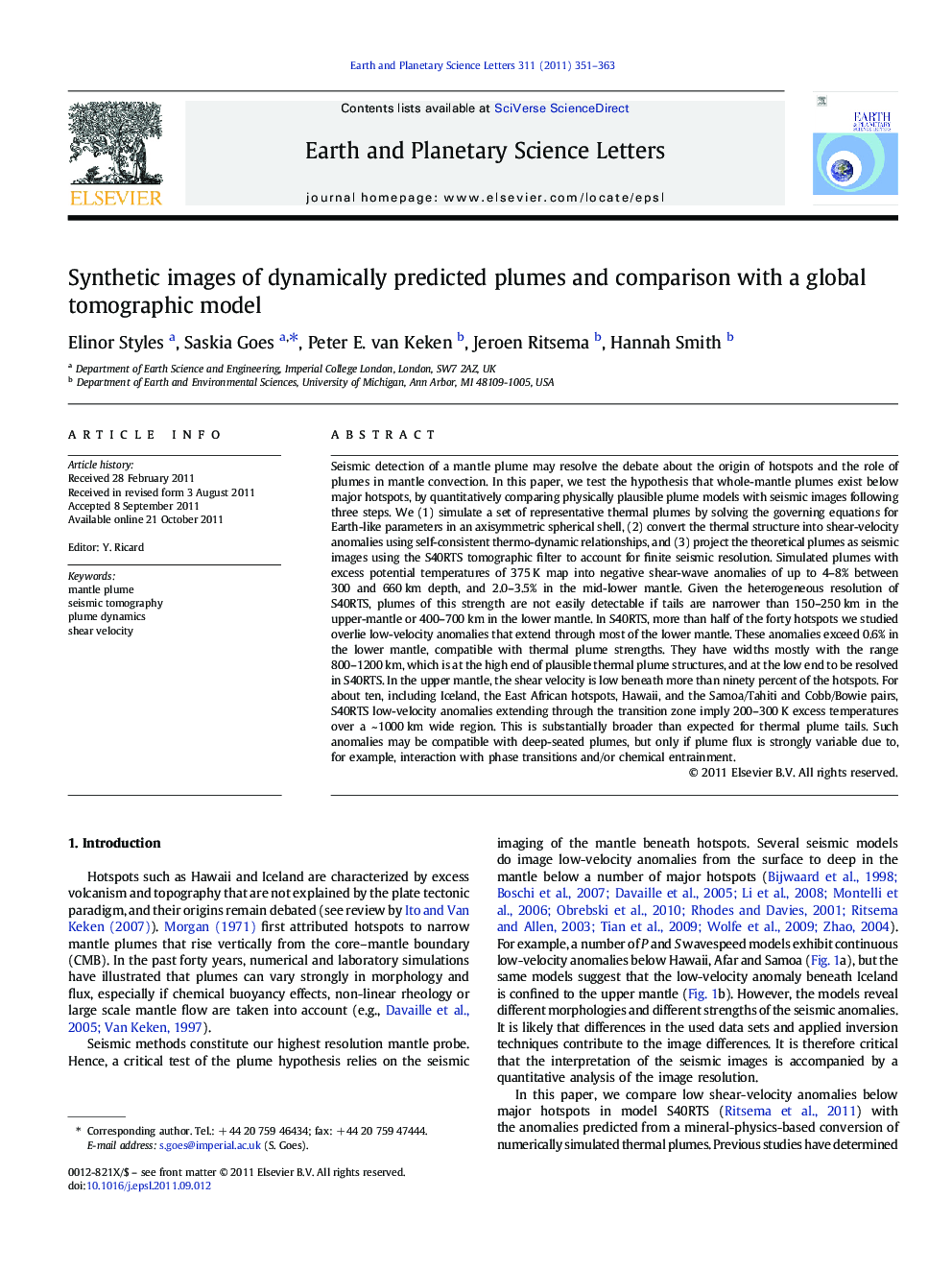| کد مقاله | کد نشریه | سال انتشار | مقاله انگلیسی | نسخه تمام متن |
|---|---|---|---|---|
| 4677814 | 1634817 | 2011 | 13 صفحه PDF | دانلود رایگان |

Seismic detection of a mantle plume may resolve the debate about the origin of hotspots and the role of plumes in mantle convection. In this paper, we test the hypothesis that whole-mantle plumes exist below major hotspots, by quantitatively comparing physically plausible plume models with seismic images following three steps. We (1) simulate a set of representative thermal plumes by solving the governing equations for Earth-like parameters in an axisymmetric spherical shell, (2) convert the thermal structure into shear-velocity anomalies using self-consistent thermo-dynamic relationships, and (3) project the theoretical plumes as seismic images using the S40RTS tomographic filter to account for finite seismic resolution. Simulated plumes with excess potential temperatures of 375 K map into negative shear-wave anomalies of up to 4–8% between 300 and 660 km depth, and 2.0–3.5% in the mid-lower mantle. Given the heterogeneous resolution of S40RTS, plumes of this strength are not easily detectable if tails are narrower than 150–250 km in the upper-mantle or 400–700 km in the lower mantle. In S40RTS, more than half of the forty hotspots we studied overlie low-velocity anomalies that extend through most of the lower mantle. These anomalies exceed 0.6% in the lower mantle, compatible with thermal plume strengths. They have widths mostly with the range 800–1200 km, which is at the high end of plausible thermal plume structures, and at the low end to be resolved in S40RTS. In the upper mantle, the shear velocity is low beneath more than ninety percent of the hotspots. For about ten, including Iceland, the East African hotspots, Hawaii, and the Samoa/Tahiti and Cobb/Bowie pairs, S40RTS low-velocity anomalies extending through the transition zone imply 200–300 K excess temperatures over a ~ 1000 km wide region. This is substantially broader than expected for thermal plume tails. Such anomalies may be compatible with deep-seated plumes, but only if plume flux is strongly variable due to, for example, interaction with phase transitions and/or chemical entrainment.
▶ Approach for quantitative comparison seismic tomography and dynamic plume models. ▶ We constrain likely seismic expressions of dynamic whole-mantle plumes. ▶ Upper and lower-mantle low-velocity anomalies in S40RTS below >20 out of 40 hotspots. ▶ Some upper-mantle anomalies too broad and strong for steady-state thermal plumes.
Journal: Earth and Planetary Science Letters - Volume 311, Issues 3–4, 15 November 2011, Pages 351–363